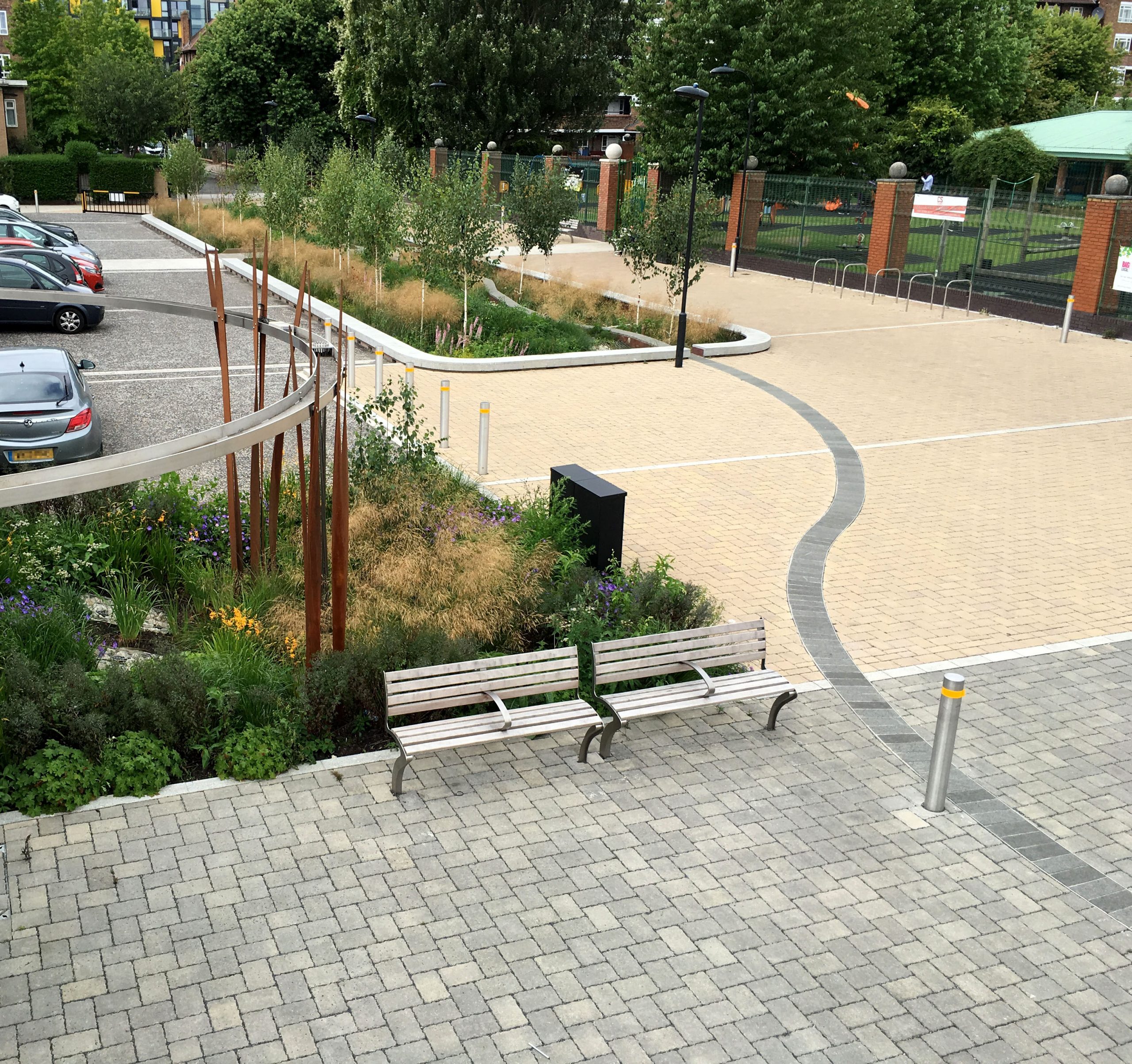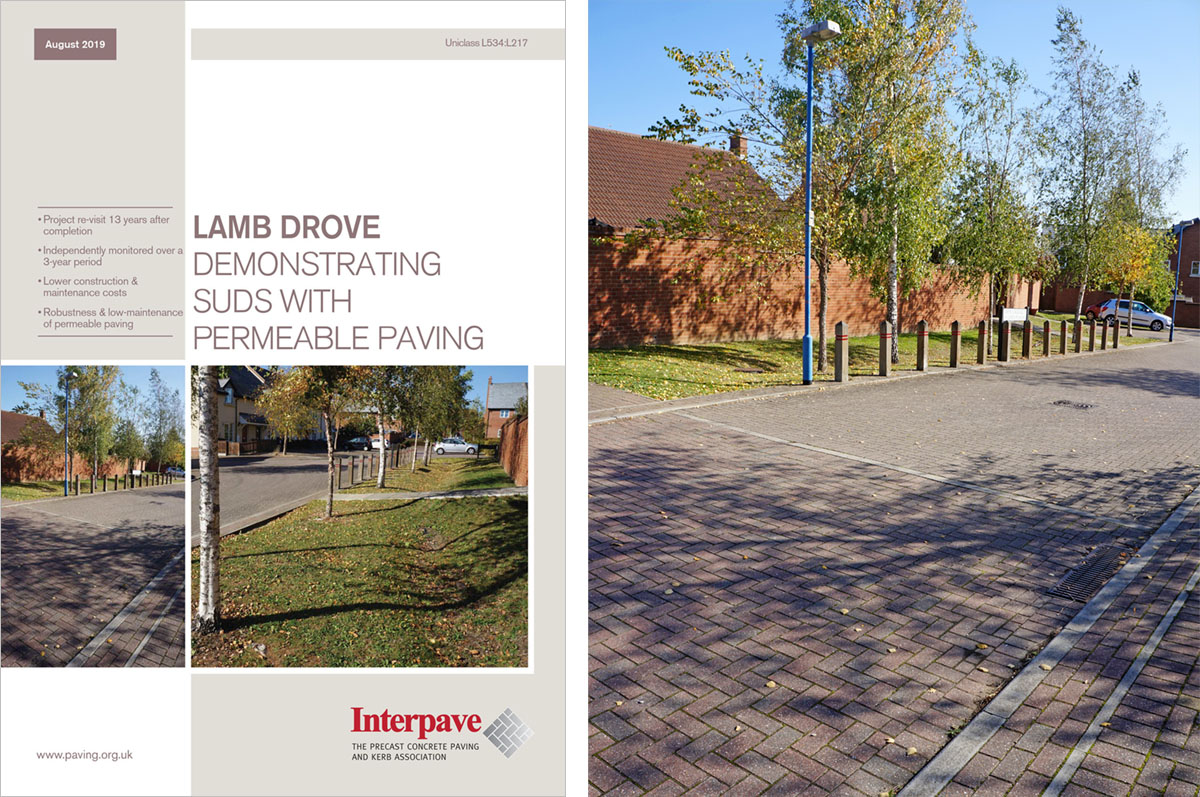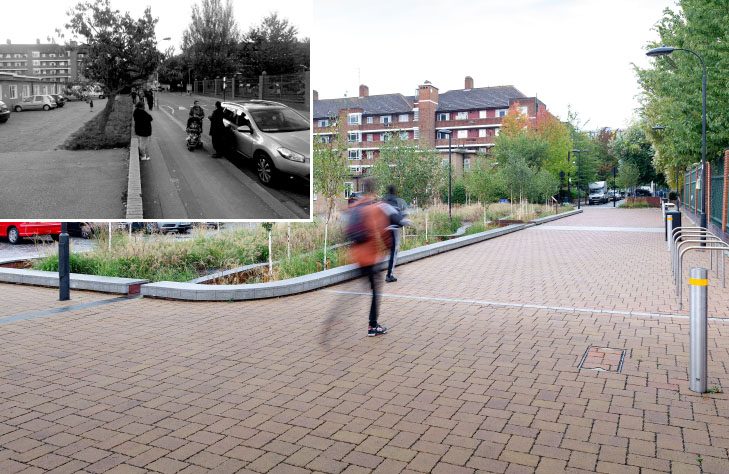Modular Multifunctional Paving for Change

Outdoor space has taken on a fundamental importance with Covid-19 and a fresh approach is needed to designing and selecting paving to meet a wide range of new requirements. Multifunctionality, sustainability and the ability to deliver changing needs over time are key to paving today.
Apart from social distancing measures directly related to Covid-19 itself, it is now clear that the pandemic has triggered a fundamental rethink about other aspects of how we live and work. Many longer-term, wider issues considered important for some time, but left on the back-burner, are now re-surfacing, with the current emergency acting as a catalyst accelerating action. These issues – including flooding from rainwater runoff, vehicular pollution of watercourses and introduction of green infrastructure – have major implications for the built environment, whether new or regenerated.
The government has recently launched ‘active travel’ initiatives encouraging walking and cycling to reduce obesity, while home working and the growth of on-line shopping have also created debate about new ’15-minute neighbourhoods’ and the reinvention of the suburbs. These ‘low traffic neighbourhoods’ – a reminder of previously adopted ‘home zones’ – highlight a change away from paving for cars, in favour of shared spaces where pedestrians and cyclists feel at home. These initiatives are now starting to be embraced by local authorities in planning policies and masterplans. But uncertainty about how new requirements will pan out calls for a flexible and adaptable approach to paving.
Modern methods of paving
Modular concrete paving systems are ideally placed to meet these challenges, whether on new or retrofitted schemes – demonstrated in various Interpave case studies discussed in an earlier post.
Adopting the principles of ‘modern methods of construction’, factory-produced modular concrete paving delivers fast, low-cost installation, with limited intervention particularly for retrofits. Importantly in these uncertain times, layouts can easily be altered and modular concrete paving taken up and re-used to meet changing demands, providing a long-term, sustainable asset. These principles generally apply to all precast concrete block, flag and kerb products.
They are fully engineered and manufactured under sustainable, controlled conditions – consistently providing accurate sizes, colours and textures, as well as slip/skid resistance and other performance characteristics. The distinct, modular units and designed variations in colour, texture and shape can break up areas giving ‘kerb appeal’ and a human scale not possible with monotonous, formless materials. So, modular concrete paving delivers a unique combination of predictability, safety and accessibility for all, with scope for endless variety in shape, scale, colour and texture to enrich the urban environment. It offers potential for real ‘places for people’ that are both multifunctional and adaptable to change.
In addition, weather-independent ‘dry’ construction methods optimise available working times to fit in with the requirements of residents on regeneration projects. There are no curing delays before the paving can be used or noxious fumes and ‘hot work’, and, as only small plant and equipment is needed, noise and disturbance is minimised. Mechanised installation techniques can help with social distancing on site, as well as speed and efficiency.
SuDS without land-take
Another key consideration today is storm-water flood prevention – particularly with climate change – and concrete block permeable paving is an essential, multifunctional sustainable drainage (SuDS) technique. In addition to paving, it also provides an inherent drainage system that requires no additional land take for water storage, treatment or conveyance. It removes water-borne pollution and provides a gradual flow of clean water at the head of the ‘SuDS management train’ enabling safe, open SuDS features on the surface and enhancing landscape design and biodiversity.
Rainwater ‘ponding’ is eliminated, reducing the risk of ice forming on the surface and preventing splashing from standing water. Permeable paving can provide a completely level, well-drained, firm and slip-resistance surface accessible to all, without the need for cross-falls, channels, gulleys or other interruptions. These and other savings resulting from SuDS are demonstrated by the Lamb Drove SuDS Monitoring project in Cambridgeshire.

Cost savings
The project assesses various SuDS techniques – including concrete block permeable paving – in a management train, compared with a conventional piped drainage system nearby. The Monitoring Report noted that capital cost savings of £314 per home were achieved using SuDS, with further potential savings available when SuDS are integrated with layout design from the start.
The SuDS design optimises natural flow routes through the site for low and high flows, as well as for exceedance. SuDS have been integrated with landscape design adding amenity, interest and biodiversity to a conventional housing layout with no reduction in density. The scheme is also popular with residents.
Low intervention regeneration
Bringing these issues together, an award-winning, exemplary SuDS scheme near Australia Road, London, demonstrates the multifunctional benefits of retrofitting permeable paving in place of conventional surfaces. It introduces the innovative concept of concrete block permeable paving as a thin overlay for existing conventional paving, removing rainwater straight from the surface without gulleys and providing some water attenuation and treatment before discharging to adjacent, well-planted SuDS basins for green infrastructure.
The innovative concept of low cost, low intervention concrete block permeable paving overlays can also be used over existing carriageways to provide a well-drained shared surface that is level with the footway. Modular concrete paving offers designers the potential to create safe, attractive and comfortable urban spaces for the post-pandemic environment, with maximum flexibility to meet future challenges and minimal interventions, particularly with retrofit, whilst reducing flooding, pollution and urban heating.

